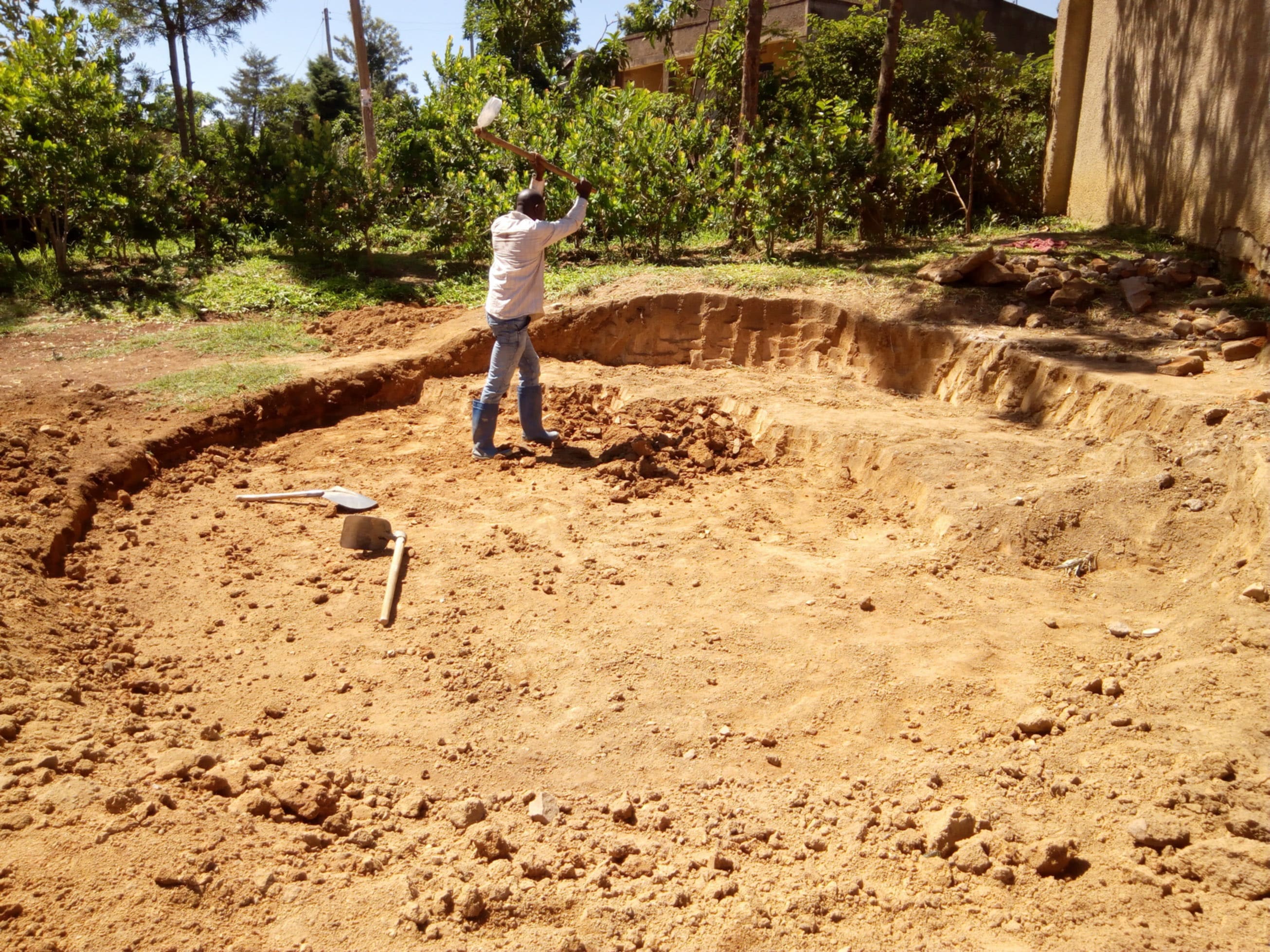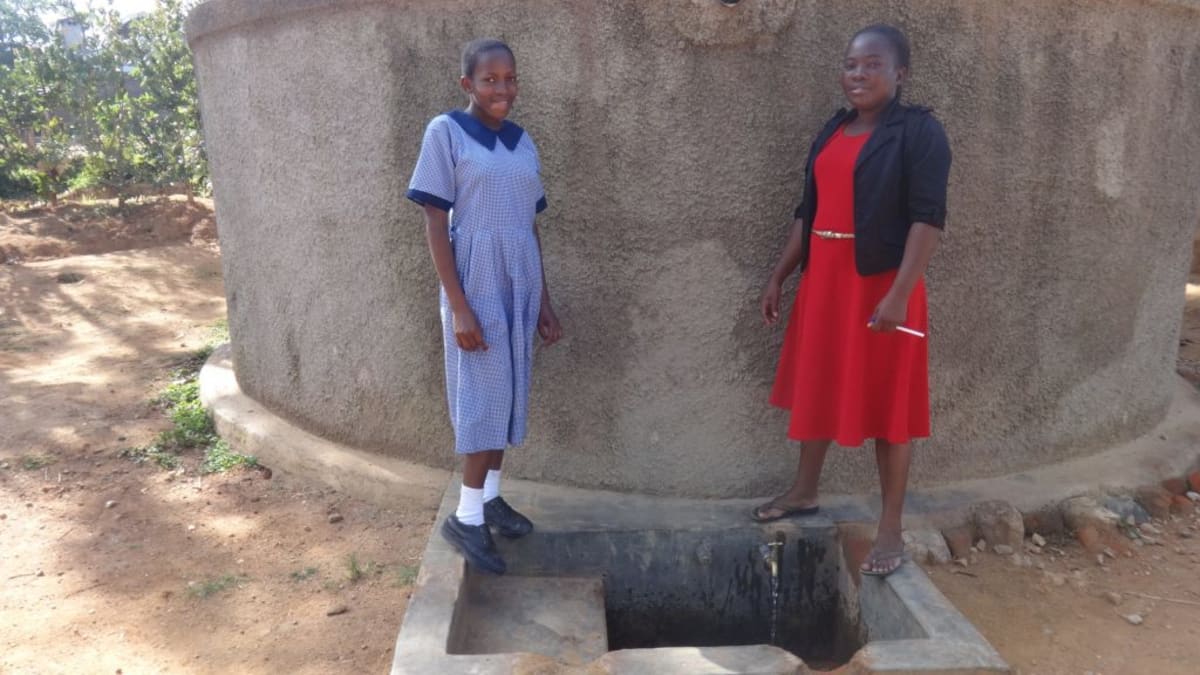This project is a part of our shared program with Western Water And Sanitation Forum (WEWASAFO). Our team is pleased to directly share the below report (edited for clarity, as needed).
Welcome to the School
Back before 1997, children living in Emusonga used to have to walk long distances to attend school. Community members were spurred to open a school in their own village because this long journey was so dangerous for their young children. When news of a little local girl's harassment and violation reached community members' ears, they could stomach it no longer. They began with just two rooms lent out for a small fee. This later became the community's property, and Chief Mutsembi Primary officially opened in 1997 with an enrollment of 10 students.
The school currently has a population of 531 primary pupils and 65 early childhood education pupils both. It employs 20 teaching staff and three support staff.
A normal day in this school is unique when compared to other schools in this county. Students report to school very early in the morning at 6am, when pupils sit for study hall. Before starting normal classes, they leave school again to fetch water from a spring in order to clean their classrooms. The lessons begin exactly at 8am and go until lunch. Students leave to eat lunch with their families and then return by 2pm for afternoon lessons until 3:45. They are required to stay for games until dismissal.
Water Situation
Kakamega County Water connected Chief Mutsembe to their piped water system, but it hasn't worked since the start. The school has reported this issue to the company, but absolutely nothing has been done to help.
That's why students have to walk to the spring to fetch water. This spring has been protected by the community, but our staff noted that some repairs need to be made to ensure the water remains safe for drinking. There are cracks in the walls and floors that need to be patched with concrete. Students often miss school because of bad stomachaches and diarrhea.
Both the community and school rely on this spring. After speaking with community leadership and neighboring families, we've decided that it's best to have a separate water source for the school to use. This will keep these 531 students within the school compound, and alleviate the strain on this community water source. The community looks forward to taking full ownership of this spring, and we've encouraged them to repair the cracks in order to prevent contamination.
Sanitation Situation
Chief Mutsembi Primary School only has five doors of VIP latrines, three doors for boys and two doors for girls. All of these are not in good condition; two of these latrines are almost full, but pupils are still using them!
They have 10 ecosan latrines which they refuse to use because of the culture's view of waste. The waste in these latrines would need recycling, but there isn't a soul who would even consider this job. These latrines were constructed by a company known as OPEC, but their efforts were in vain. The latrines just sit there and have been vandalized.
There aren't even any hand-washing stations for students after they use the latrine. Headteacher Joseph Aruba said, "Sanitation in this school has been an issue, but God has answered our prayers by bringing WEWASAFO in our institution."
Plans: Hygiene and Sanitation Training and Hand-Washing Stations
Training will be held for two days. The facilitator will use PHAST (participatory hygiene and sanitation transformation), ABCD (asset-based community development), CTC (child to child), lectures, group discussions, and handouts to teach health topics and ways to promote good practices within the school. The CTC method will prepare students to lead other students into healthy habits, as well as kickstart a CTC club for the school. This CTC club will oversee the new facilities, such as hand-washing stations, and make sure they are kept clean and in working condition. The two hand-washing stations will be delivered to the school, and the club will fill them with water on a daily basis and make sure there is always a cleaning agent such as soap or ash.
Plans: Rainwater Catchment Tank
A 50,000-liter rainwater catchment tank will be constructed on school grounds. Teachers, students, and parents will gather the materials needed for this project, including sand, ballast, bricks, and hardcore. This contribution will fuel a sense of responsibility for the school and community to take care of their new facilities. Once materials are mobilized, the WEWASAFO team will arrive to lead the construction effort.
With adequate clean water, the school will have water for drinking, cooking, cleaning, and hand-washing.
Plans: VIP Latrines
Two triple-door latrines will be constructed, providing three new latrines for each gender. Latrine materials will be mobilized the same way as the tank, ensuring the school feels these facilities are truly theirs. And with a rainwater catchment tank nearby, there will be enough water to keep them clean.
School administration and parents are positive that with these new facilities and training, their students’ academic performance will improve. Students will be healthy and empowered to focus on what’s important!

 Rainwater Catchment
Rainwater Catchment
 Rehabilitation Project
Rehabilitation Project































